Author Sherri Stewart
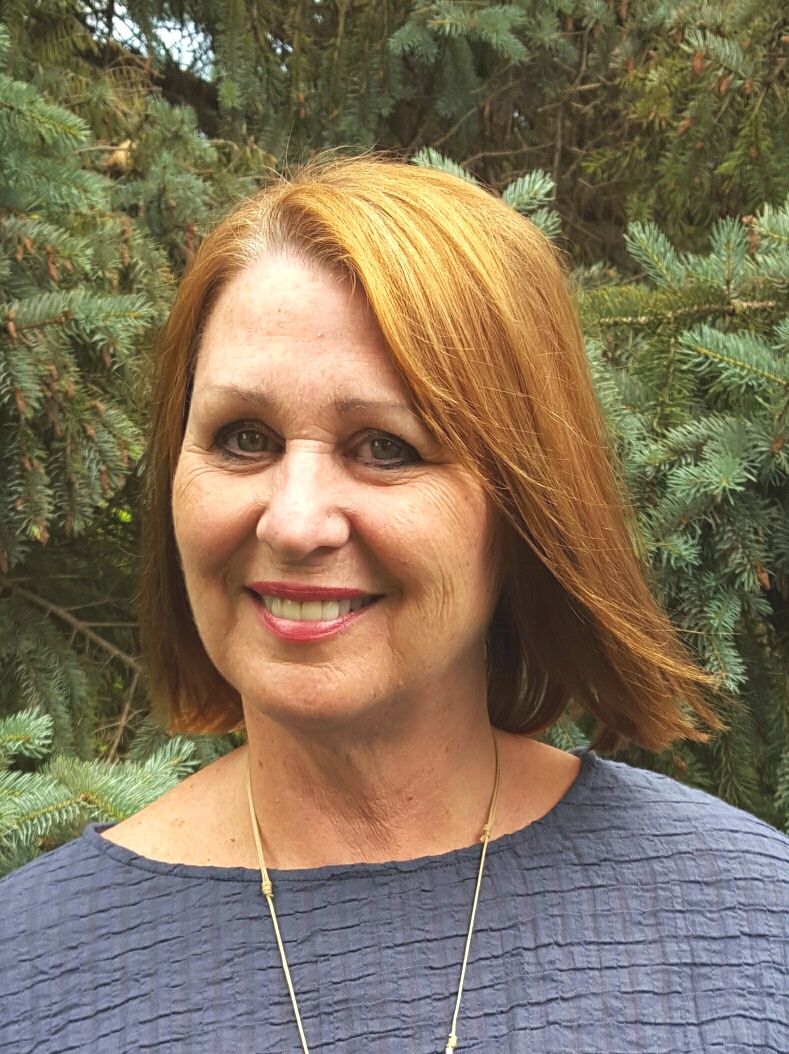
Sherri Stewart loves a clean novel, sprinkled with romance and a strong message that challenges her faith. Her passion is traveling to the settings of her books, sampling the food, and visiting the sites. Sadly, her trip for this book to Wales and London was cancelled due to COVID. A recent widow, Sherri lives in the Orlando area with her dog, Lily. She shares recipes, tidbits of the book’s locations, and pix in her newsletter.
Tell us about your newest book.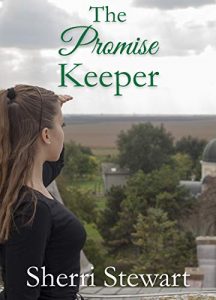
Meadow meets Jonathan by chance when they end up with the same seat ticket to a concert in London. Serendipity or the providence of God? They fall in love. But all good things must end when Meadow returns to Atlanta and Jonathan heads back to law school in New York. They promise to keep in touch. Jonathan believes God has brought them together. Meadow’s not so sure, but they promise to meet at Christmas on the rooftop of Cardiff Castle in Wales in two years if they’re not already spoken for. Will Jonathan keep his promise? Fans of Serendipity and Sleepless in Seattle will enjoy this novella.
What inspired you to write The Promise Keeper?
Watching the movie Serendipity, which is a fancy word for destiny or coincidence. It’s a heartwarming story, but we believers have something better—the providence of God—His sovereignty. I started thinking—what if the basic story of two people’s destiny was not a matter of chance but of God’s plan?
What genre do you focus on and why?
Mostly, I write romance with something else—suspense, contemporary, historical, and my next book is a time-travel romance.
Why do you write?
It’s my way of fulfilling the great commission. People may not read the Bible, but they may read a novel and meet God for the first time.
What is your work schedule like when you’re writing a book?
Once I sign a contract, I write 500 words a day six days a week. (I’m an editor so I don’t have the time for more than that.)
What’s the best part of your author’s life?
Traveling to the settings in my books. My next book, The Roosevelt Key, coming out in February takes place in LA. I’ll be spending a lot of time in the famous Forest Lawn Cemetery and staying at the Roosevelt Hotel in Hollywood.
What’s one unusual fact about you?
I like to work my way through a recipe book—making recipes in order, even if I know I won’t like them. I do the same thing with menus at restaurants.
How have you changed or grown as a writer?
I’ve grown a tougher skin. Belonging to critique groups and attending meetings with agents at conferences have helped me learn to make the most of criticism.
Do you have other books? We’d love to know.
I’ve written about sixteen books. They’re available on Amazon.
Website: www.stewartwriting.com
Link to book: https://amzn.to/2Y07QP0
Social media links:
https://www.amazon.com/author/sherristewart/
https://www.facebook.com/sherristewartauthor/
https://www.goodreads.com/author/show/758893.Sherri_Stewart
https://www.instagram.com/stewart_sherri/
https://www.bookbub.com/profile/sherri-stewart
Historical Author Marilyn Turk
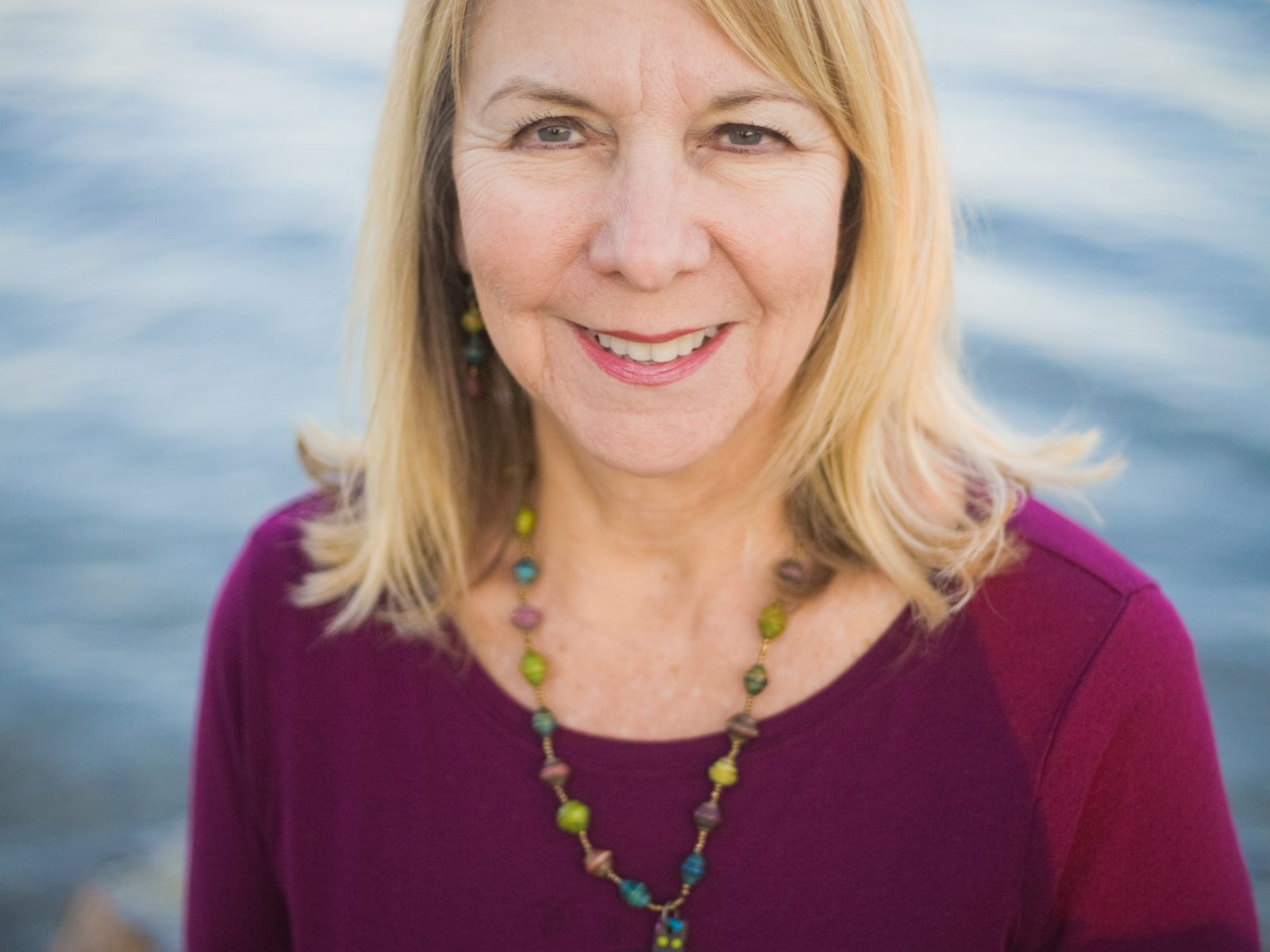
Marilyn Turk sees the miraculous creation of God in everyday life. As a writer, she tries to capture His truths through her historical novels and heartfelt devotions. She loves to encourage people to find their strengths and develop their God-given gifts, a message she shares when she speaks to audiences. She and her husband, avid lighthouse enthusiasts, have visited over 100, and her popular lighthouse blog features true lighthouse stories. In her spare time, she enjoys boating and fishing, taking walks or playing tennis.
Tell us about your newest book.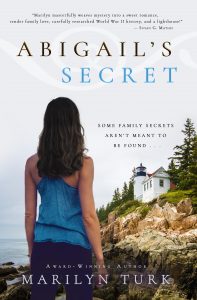
In Abigail’s Secret, newly widowed young mother Abby Baker goes home to Hope Harbor to help her ailing mother and restart her life. Weighed down by grief and fear of failure, she wishes she had the strength of her grandmother, who raised a young child alone while taking on the role of lighthouse keeper after her husband drowned. What was the secret of Granny Abigail’s strength? Carson Stevens is a lighthouse enthusiast who has bought the deteriorating Hope Island lighthouse to restore it and turn it into a bed-and-breakfast. When he meets Abby, he wants the attractive granddaughter of the former keepers to be part of the restoration. As Abby and Carson work together, they uncover clues to a family secret that threatens to change Abby’s life forever. But someone is trying to sabotage their efforts at restoration. Is the saboteur trying to keep something from being found? Renovating the old lighthouse is Abby and Carson’s goal, but as they grow closer, they discover that what they’ve really needed is a renovation of their hearts.
What inspired you to write Abigail’s Secret?
Several years ago I surveyed more than 100 women about strength. To the question, ‘who is the strongest woman you know or have known?’ the overwhelming majority said that woman was their mother and especially, their grandmother. In my book, a young woman believes she doesn’t have the strength to handle her responsibilities but remembers her late grandmother, a lighthouse keeper, as having extraordinary strength. I wanted to show how often we doubt our own strength, but we have just as much as God gave our ancestors.
How would you describe this book to someone in a 30-second blurb?
Abby Baker, a young widow with a small child, goes home to help her ailing mother and start life over. When she meets Carson Stevens, the man who bought the lighthouse where her grandmother was a keeper, she gets involved in its restoration and discovers some surprising family history.
What genre do you focus on and why?
I usually write historical novels with romance and a little suspense.
Why do you write?
I write because I believe God gave me the stories to write and I’m obligated to write them.
Who is your main character?
My main character is Abby Baker who was named after her grandmother, Abigail Martin.
What is your work schedule like when you’re writing a book?
Although I try to start on it in the morning, it’s often after lunch before I get going, even though I’ve been sitting at the computer for hours already.
What is the hardest part of being an author?
Consistency. So much about writing is based on self-control and self-imposed deadlines, and I lack the discipline.
What’s the best part of your author’s life?
Freedom and discovery. I never liked sitting under the scrutiny of a boss, which is why I was in sales for 30 years. Writing gives me the freedom to write when I want to, what I want to write, and as much as I want to write. I love the discovery of interesting historical facts I can weave into my stories and I love seeing how the stories turn out.
What’s one thing your readers should know about you?
I never dreamed of writing books. I thought I’d only write devotionals until I went to writers’ conferences that started my mind down story trails.
How have you changed or grown as a writer?
I don’t worry about whether I’ll get published or not, and I’ve learned my method is what works for me. I used to try to do everything everyone else did which stressed me out.
What is your favorite pastime?
Hard to pinpoint, but I love tennis, (although I started playing late and am not very good), and I love being near water, which is why I live in Florida.
Do you have other books?
Yes, I have a four-book series set in Florida from 1861-1883 called Coastal Lights Legacy, featuring four different lighthouse settings. I also have a two-book series called Suspicious Shores which consists of The Gilded Curse andShadowed by a Spy and are set in 1942 on the East Coast.
What are you working on now?
I’m currently working on a standalone historical romance called Love’s Saving Light, based on the true story of Maine’s traveling lighthouse schoolteacher.
Website: marilynturk.com, pathwayheart.com
Link to book: https://www.amazon.com/Abigails-Secret-Marilyn-Turk/dp/1645262626/
Social media links: Facebook.com/Marilyn.turk.9
Twitter: @MarilynTurk
Pinterest: pinterest.com/bluewaterbayou
Meet author Buck Storm

Buck Storm is a critically acclaimed author and musician. His books and songs have made friends around the world. Buck and his wife, Michelle, have been married for thirty-one years and have two married children.
Tell us about your newest book.
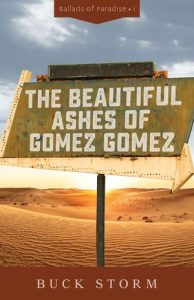 The Beautiful Ashes of Gomez Gomez is a literary novel about a man who’s lost his wife in a head on collision. He decides to leave everything, move into the bushes near the crash site, and basically drink himself to death so he can be with her again. The book obviously deals with a grief theme but, believe it or not, still manages romance, mystery, and humor. Part of it also takes place on a Greek Island in the sixties (so fun to write). I don’t think readers familiar with my previous books will be disappointed. Out of all my work, this was probably the most enjoyable book to write.
The Beautiful Ashes of Gomez Gomez is a literary novel about a man who’s lost his wife in a head on collision. He decides to leave everything, move into the bushes near the crash site, and basically drink himself to death so he can be with her again. The book obviously deals with a grief theme but, believe it or not, still manages romance, mystery, and humor. Part of it also takes place on a Greek Island in the sixties (so fun to write). I don’t think readers familiar with my previous books will be disappointed. Out of all my work, this was probably the most enjoyable book to write.
What inspired you to write?
I was riding in a car once with a wonderful elderly friend of mine. She told me a story of picking up the wrong suitcase at the airport one time and finding someone’s ashes inside when she got home. For some reason she found the whole thing hilarious. Granted, my book has absolutely nothing to do with that event, but I remember coming up with the title and general outline that day.
How would you describe this book to someone in a 30-second blurb?
Literary Americana fiction filled with humor and heart. The Beautiful Ashes of Gomez Gomez is quirky, heartfelt, and deeply human. Lives and hopes collide in the town of Paradise, stretching across decades and continents in this epic story of forgiveness, redemption, and love.
What genre do you focus on and why?
I write literary fiction, although I’ve taken a couple side trails—a nonfiction book about some off the beaten path Israel adventures, and a couple biblical fiction novels. I come back to literary fiction because I like the freedom. It’s not quite as structured as genre fiction. And I’m more of a stream of consciousness (pantser) writer so it works well for me. Also, as a longtime songwriter, I really enjoy leaning back into the language of literary fiction.
What is your work schedule like when you’re writing a book?
I pretty much write every day. Grab a cup of coffee in the morning and have at it for at least six hours. Although, if there’s a deadline looming, that time multiplies quite a bit.
What is the hardest part of being an author?
I think the hardest thing about writing is disappearing into your settings and characters for months on end without any real feedback. Am I headed in the right direction? Does any of it make any sense? What if it’s plain old horrible? Or, even worse, boring? The whole thing by nature is a very solitary business. Somewhere down deep, a writer has to have a pretty big reserve of confidence in his or her ability to keep pressing on (either that or be delusional ).
What’s the best part of your author’s life?
The same as the hardest part. Writing challenges me every day. Every hour, really. I’m a bit of an introvert, so, settling into my writing chair with a whole day of creativity in front of me is one of the best feelings in the world.
What’s one unusual fact about you?
I’m probably best known as a singer/songwriter (and hopefully an author) but I worked for ten years or so as a commercial diver (not driver) and fisherman.
How have you changed or grown as a writer?
For a long, long time I was afraid the other shoe would drop, and everyone from my agent to publishers to readers would realize I’m basically making the whole thing up and have absolutely no idea what I’m doing. I still have moments of that, but I like to think I’m learning the craft a bit more. Still it’s a bottomless well. Always so much to improve on!
What is your favorite pastime?
Anything to do with my family. I have two married children and a new granddaughter. We’re a very close family and do things together almost every day. I’m so blessed it that way. Not only do I have a wonderful family but built in friends. I just love it. (Especially if we’re on a beach somewhere in the world!)
Do you have other books? We’d love to know.
The Miracle Man (Iron Stream Media)
Truck Stop Jesus (Iron Stream Media)
Finding Jesus in Israel, Through the Holy Land on the Road Less Traveled (Hachette Book Group)
The List (Compass Publishing)
The Light (Humphrey House Books)
What are you working on now?
At the moment I’m working on a follow up to Gomez Gomez—The Sound the Sun Makes. Right after that I’ll be starting a third book called Venus Sings the Blues. Kregel will be releasing these as a three-book series called The Ballads of Paradise.
Website: www.buckstorm.com
Link to book: https://www.kregel.com/fiction/beautiful-ashes-of-gomez-gomez/
Social media links:
www.facebook.com/buckstormauthor
Meet YA author Carrie Looper Stephens
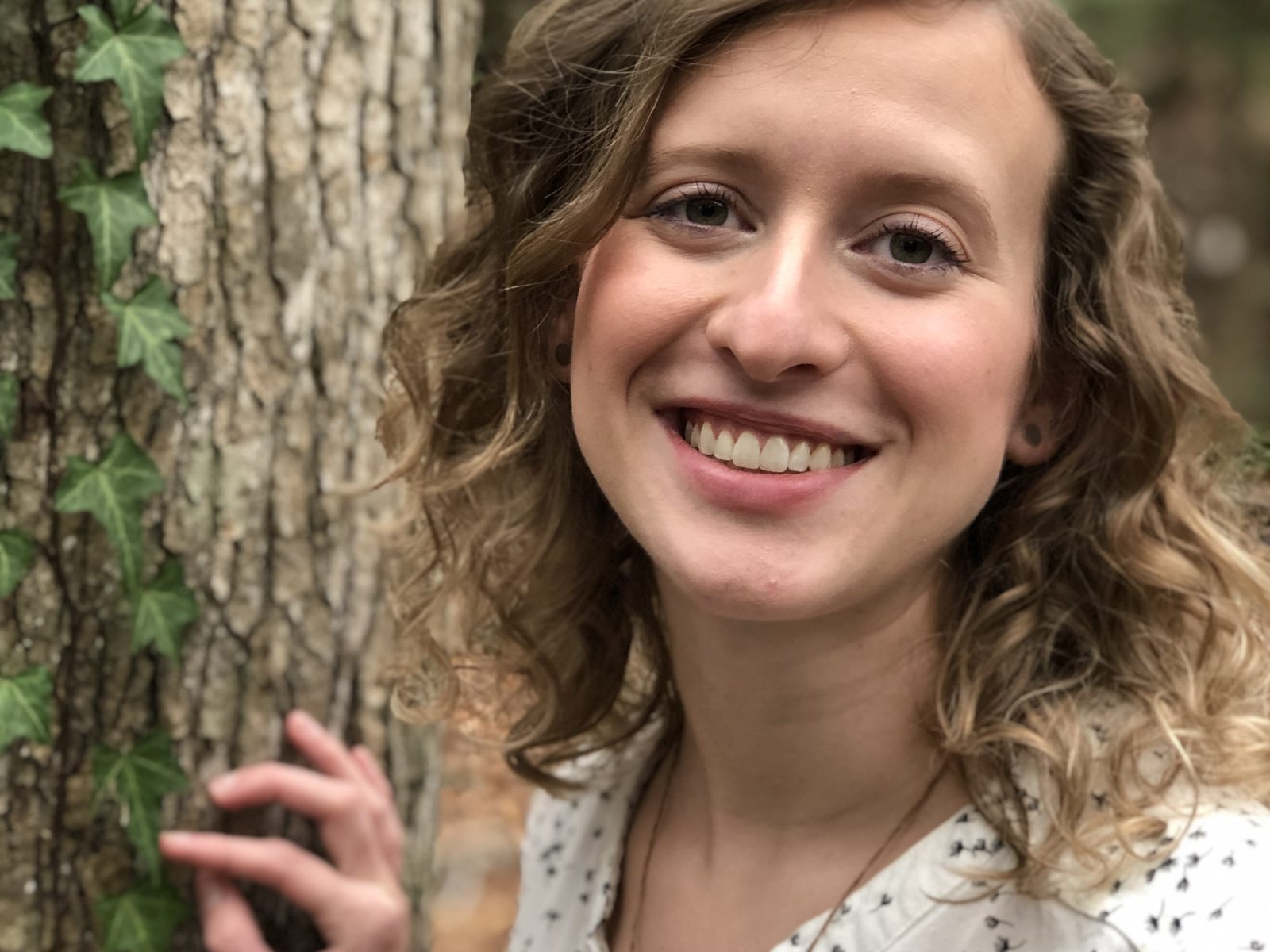
Carrie Looper Stephens first created the Vickland Trilogy when she was 13 and she’s loved telling stories ever since. She also loves gardening, hiking, reading, and rescuing cats. She lives in South Carolina with her husband Daniel, daughter Elanor, and two cats, Chrono and Marle. The Zenia Wood is the first book in the trilogy.
Tell us about your newest book.
Gwyn has always been focused on fitting in with the popular girls in her idyllic seaside town. But when a hooded stranger alerts her to her parents’ danger, survival becomes her goal. After finding her parents murdered in their own home, Gwyn and her brother scramble to escape the killer—the notorious Black Wizard.
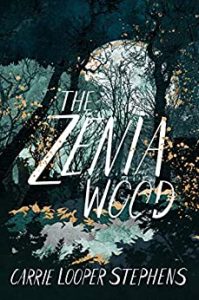 Desperate to break away from his father’s scrutiny and criticism, the prince of Vickland—Heron Oakheart—escapes into the mysterious Zenia Wood. There, he meets Bromlin. The eccentric old man tells the prince a dark secret about his father and forces him to question everything he knows.
Desperate to break away from his father’s scrutiny and criticism, the prince of Vickland—Heron Oakheart—escapes into the mysterious Zenia Wood. There, he meets Bromlin. The eccentric old man tells the prince a dark secret about his father and forces him to question everything he knows.
Thrown together by chance, Heron and Gwyn begin to unravel the dark plots surrounding them. Facing dragons, witches, and dark magic, Gwyn and Heron have no choice but to cling to their courage if they are to survive. Can they outwit their cunning opponents and rescue Gwyn’s brother from a castle prison before it’s too late?
What inspired you to write The Zenia Wood?
Growing up, I read voraciously and had an active imagination. The Zenia Wood began as a story I told my siblings on rainy days and long road trips, or when I was supposed to be doing homework. As I grew up and started writing down the series, many teachers and parents told me they found it difficult to find clean fiction for their students and children. I realized I had found my calling: writing a well-told, clean, adventure story.
How would you describe this book to someone in a 30-second blurb?
Two siblings, Gwyn and Martin, are on the run from their parents’ murderer, the Black Wizard. When Martin is kidnapped, Gwyn must find her way to the Uziel Mountain to rescue him. A runaway prince, Heron, comes face to face with a dark side to his father, the king of Vickland. He and Gwyn are forced to work together to survive, and try to rescue Martin from the clutches of the Blood Witch.
What genre do you focus on and why?
My genre is Young Adult Fantasy. I enjoy this genre because I used to imagine I could escape to magical worlds. I often wanted to run away and retreat into my daydreams, where I created different worlds, worlds where I could be free to be me. Worlds where I was the strong hero, esteemed and popular, and loved and admired.
Why do you write?
I know it’s cliché to say I write to express myself, but it’s true. During periods in my life when I couldn’t make the time to write, I felt bottled up on the inside, words, confusion, and stress swirling in my heart. But when I finally had a chance to write (either through my journal or the Vickland Trilogy), the words poured out on the page, as if they had a mind of their own. After I write, peace and satisfaction fill me. I am so grateful God has given me an outlet to express myself.
Who is your main character, and how did you choose that name?
Gwyn is my main character in the Vickland Trilogy. I have always had a fascination with names and their meanings. My parents had a baby name book, which I often poured over. I kept coming back to the name Gwyn. It sounded strong, mystical, and feminine, but not frilly. Which is Gwyn in a nutshell.
What is your work schedule like when you’re writing a book?
I like to think of my title as “Mom by day, Writer by nap time.” I write during Elanor’s nap times, and sometimes in the evenings after she goes to bed. My husband is also kind to have daddy daughter dates with Elanor some Saturdays, which gives me time to write. I will admit, it is really hard for me to get into what I call “the writing zone” now days. The writing zone is when I get tunnel vision, my fingers flying furiously over the keyboard as I enter the magical world of Alastar. I usually only get about 30-60 minute chunks of time throughout the day, so entering the writing zone is difficult. But I keep reminding myself that my husband and daughter are more important than my book. The writing will get done eventually, but my time with my family is more important.
What is the hardest part of being an author?
Promotion. I know some authors enjoy this, but I am not a salesperson personality. I also do not like social media, because it can suck away time that would be better spent with my family or writing.
What’s the best part of your author’s life?
Writing and editing. I love falling into Alastar and interacting with the characters, watching them develop on their own. I do not create my characters. They create themselves. I have tried to control and manipulate them, but they only rebel and become who they want to be.
What’s one unusual fact about you?
I love rescuing cats. Throughout my life time, I have rescued 4 cats. We currently only have two cats, one whom Daniel and I rescued in 2018. Someone had just thrown her out on the side of the road as a teeny kitten. I have a dream of starting a cat rescue mission someday. I wish all the kitties in the world could have loving, safe homes.
How have you changed or grown as a writer?
I used to be so proud of my writing that I would get defensive when I received critique. But all that changed when I joined a writers’ group. In writers’ group, a group of people read their stories out loud, and then we comment on the writing pieces. It was quite intimidating, and at least once I cried after I left. But through the loving criticism of my friends, I grew as a writer. I would not be where I am today without being part of my writers’ group. A writer cannot write alone. We need input from others.
What is your favorite pastime?
Spending time with my family. I am such a homebody. I love taking walks with Daniel and Elanor, reading books, playing with Elanor, and spending time with Daniel once Elanor is in bed.
What are you working on now?
I am currently working on rewrites and edits for Book 2 in the Trilogy! Of the whole trilogy, Book 2 is my favorite. I love the story, the character interactions, and the journey.
Website: https://www.carrielooperstephens.com/
Link to book: https://www.amazon.com/Zenia-Wood-Carrie-Looper-Stephens/dp/1645262340
Social media links:
https://www.facebook.com/carrielooperstephens/
https://www.instagram.com/thetaleofvickland/
https://www.goodreads.com/author/show/19655477.Carrie_Looper_Stephens
Meet author Renea Winchester
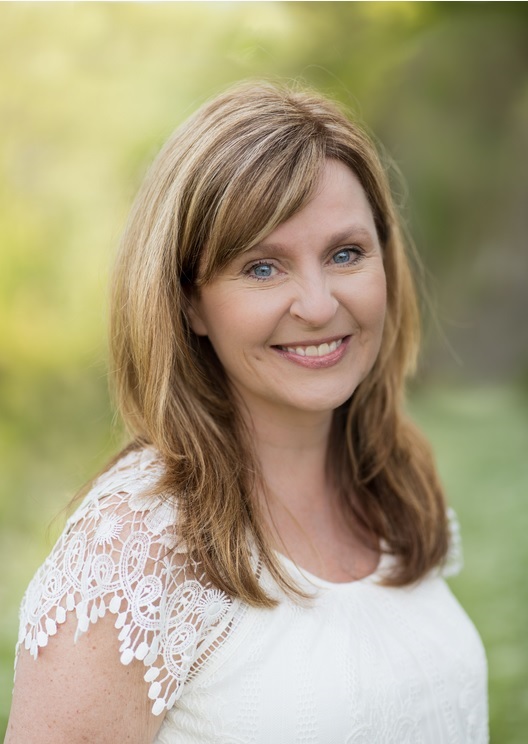
Renea Winchester is a first-place winner of the North Carolina Press Association Award, the recipient of the Wilma Dykeman Award, and a two-time winner of the Appalachian Writer’s Award. She which was nominated for the SIBA award and received the endorsement from The Pulpwood Queens, the largest book club in the country. Renea has served on the Atlanta Writers Board, Georgia Writers Association, and judges multiple literary awards. Set in her hometown of Bryson City, North Carolina, Outbound Train is nominated for the Crook’s Corner Prize and Best New Fiction (American Book Fest).
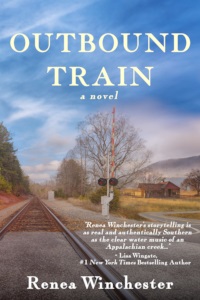 Tell us about your newest book.
Tell us about your newest book.
Outbound Train is a Southern fiction title, set in my hometown of Bryson City, North Carolina. It is the story of three generations of Parker women: Granny Pearlene, her daughter Barbara, and Carole Anne – age sixteen. These three ladies have known their fair share of hardship, but they are “make do” women. Women who can take a little scrap of nothing and create a work of art.
What inspired you to write Outbound Train?
I love to tell the story about Outbound Train during the infancy stage. My brother actually encouraged me to write this story after we traveled past a trailer park where mobile homes sat end-to-end. There, I saw my Carole Anne, a young girl peering outside the window dreaming of more. “That’s your book,” my brother said. “You need to write about Bryson City and the way it was when we were growing up. Only you can tell people about the way things once were, before the tourists came and land became so expensive the locals could no longer afford to live here.” After seeing the young girl, I just couldn’t get Carole Anne out of my heart. Wedged up against the train tracks, close enough to almost touch the cars as they passed, I knew Carole Anne’s story deserved to be told.
How would you describe this book to someone in a 30-second blurb?
A triumphant story of women overcoming tragedy, fear, and poverty.
What genre do you focus on and why?
Having transitioned from non-fiction stories based in the South, I now write Southern fiction.
Why do you write?
I write with a fierce determination to tell the stories of my people, those who are misunderstood, unseen, underrepresented and often mocked. I write to show the humanity of blue-collar workers, especially women who have a long history of being able to take a whole lot of nothing and turn it into something beautiful.
What’s the best part of your author’s life?
The absolute best part of a writer’s life is meeting readers. I do not write for myself. I write for them. I want words to open a window that readers can look through.
What’s one unusual fact about you?
During my life, I have rescued hundreds of thousands of daffodils from certain death due to development.
How have you changed or grown as a writer?
I believe if you aren’t learning, you are essentially stagnating. This is my philosophy about writing, and life. I have an insatiable hunger to learn, and this hunger allows me to grow as a writer. Also, one of the best words of advice I can offer any writer is to read outside of your genre. Support lesser-known-authors. Tell others what you are reading. Don’t be on your cell phone all the time. Get caught reading while waiting in the doctor’s office or at the airport.
Do you have other books? We’d love to know.
Outbound Train is my debut novel. My first book, In the Garden with Billy, and its sequel, Farming, Friends & Fried Bologna Sandwiches are still available.
What are you working on now?
Thank you for asking about my latest work. I’m currently working on another Southern fiction title called, The Mountains Remember based on my grandmother’s displacement from her land in order to form the Great Smoky Mountains National Park.
Website: http://reneawinchester.wordpress.com/
Link to book: https://www.amazon.com/gp/product/1645262413/ref=dbs_a_def_rwt_bibl_vppi_i0
Social media links:
Instagram https://www.instagram.com/reneawinchesterauthor/
Facebook: https://www.facebook.com/Renea-Winchester-Author-162590877104288/
Meet author Cher Gatto

Tell us about your newest book.
My debut novel, Something I Am Not, was published by Lighthouse Publishers of the Carolinas and released January 2019. Originally titled Billy, Something I Am Not won the American Christian Fiction Writer’s (ACFW) Genesis Award for contemporary fiction. My second novel Regent is due out this year.
What inspired you to write Something I Am Not?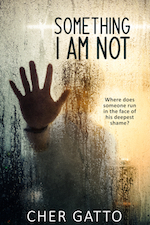
I never meant to be a writer. It’s something that happened to me when I wasn’t looking. Our family served as missionaries in Mexico developing a horse ranch for kids from the nearby villages. Our coworkers ran a shelter for battered women. I say women loosely, most could barely be called that. They were babies themselves—13, 14, 15 years old—many of them with children of their own, the pregnancies resulting from abuse, rape, or incest. Some had been rescued out of trafficking. One girl I knew better than the others had been sold by her mother at five years old for child porn so her mother could get her next fix. Tragic and incomprehensible.
It wasn’t until later, I realized Billy’s journey gave me the key to heal from those things I couldn’t change. Things that broke my heart. Tragedies that couldn’t be righted. I needed a different ending–a redemption story.
How would you describe this book to someone in a 30-second blurb?
Something I Am Not is a story about coming home. It’s a story about living under the wrong father—believing the lies that tear us down—and the freedom of finding the right one. It’s about knowing deep down you were made for something more.
Billy McQueen works hard to keep his life together … and concealed. At seventeen, he dreams of an escape from the barroom, his father’s manipulation, and the advances of his father’s girlfriend. On his eighteenth birthday, he is introduced to a younger brother he never knew he had. An eight-year-old barely capable of navigating the corrupt world of his father’s boxing club.
In order to secure his own freedom, Billy must fight for it. But to save his little brother who is next in line for the slave trade … he must be willing to die for it.
What genre do you focus on and why?
Interestingly, I write Young Adult with a very strong reader group of women over forty. With a house full of teens and a teaching job in a high school, I am drawn to live vicariously through them. It allows me to go back, to relive those tumultuous years, the pressures of youth and learning to cope within a world that feels upside down. To make sense of love and suffering. It’s wonderous and most times simplistically complex. My stories flow from a Christian worldview without being overt. My writing tends to dump us into the well of depravity and climb us back out with the hand of Grace.
Why do you write?
There are so many of us out there who live on the fringe of who we were meant to be. So many of us defined by our mistakes or faults or shortcomings. So many of us who live like orphans, though we’ve been adopted into kingship. The message is universal … we can never be too far gone or too far out of reach to be rescued and brought home. Those are the stories that come out. Those are the ones I love to tell.
Who is your main character, and how did you choose that name?
I don’t know. He was just always Billy. His little brother, who he finds midway in the story, was Toby right from the start. Later, after I had written it, my mother shared with me stories of her cousin whom she adored as a teen. He died in his early thirties, and it broke her heart. His name was Billy. When he was a young boy, he dragged around a worn teddy bear. The bear, he named Toby.
What is your work schedule like when you’re writing a book?
Because I am a full-time teacher, mother of five, and have a husband in full-time ministry, most of my writing happens in the early morning. My thoughts flow better in the quiet before anyone stirs. I try writing later in the day, but nothing comes out … or nothing worth reading anyway.
What is the hardest part of being an author?
The hardest part of being an author is remembering why I write. It’s so easy to forget. I can get caught up in the highs and lows of the process. The roller coaster is ever present to take us up to the shimmering top and drop us down into the black hole. It’s relentless and can rob my joy for writing with the swift arm of discouragement. The real ride is every day, every moment, and best taken while tucked in the arm of Jesus. My identity has to come from Him or it changes with the tide.
What’s the best part of your author’s life?
The coolest thing about writing is coming to walk and live with your characters so closely that you stop telling the story and just start following. I tried several times to end both my novels a different way, but the characters would not allow it. And rightly so. It was their story.
The other thing I treasure about being an author is when someone tells me my story affected them deeply, helped them see something new, or even changed their life. Sometimes I can’t fathom it—that something I could write could possibly have an impact like that.
What is your favorite pastime?
My toes in the cool sand and a great book on my lap! I also love to horseback ride and learned on the back of a belligerent pony when I was six years old. I’ve been riding ever since, though lately I am more afraid of what my bones will do if I hit the ground!
Do you have other books? We’d love to know.
My second book Regent is finished and in its last edits before submission. This one has all the edge-of-the-seat suspense Billy’s story had but without the heavy topic of trafficking. Regent’s back-cover blurb reads something like this …
Justin has never known family. His mother died when he was born. His father disappeared. And the foster care system has failed him. At seventeen, he arrives at Regent in upstate New York, a shut-down psychiatric hospital turned boarding school, to rehabilitate from a crime he never committed—and hide a secret he vowed to keep.
Website: www.journeywithwords.com
Link to book: https://www.amazon.com/Something-Am-Not-Cher-Gatto/dp/1946016691
Social media links: Visit me on Facebook and Instagram (chergatto)
